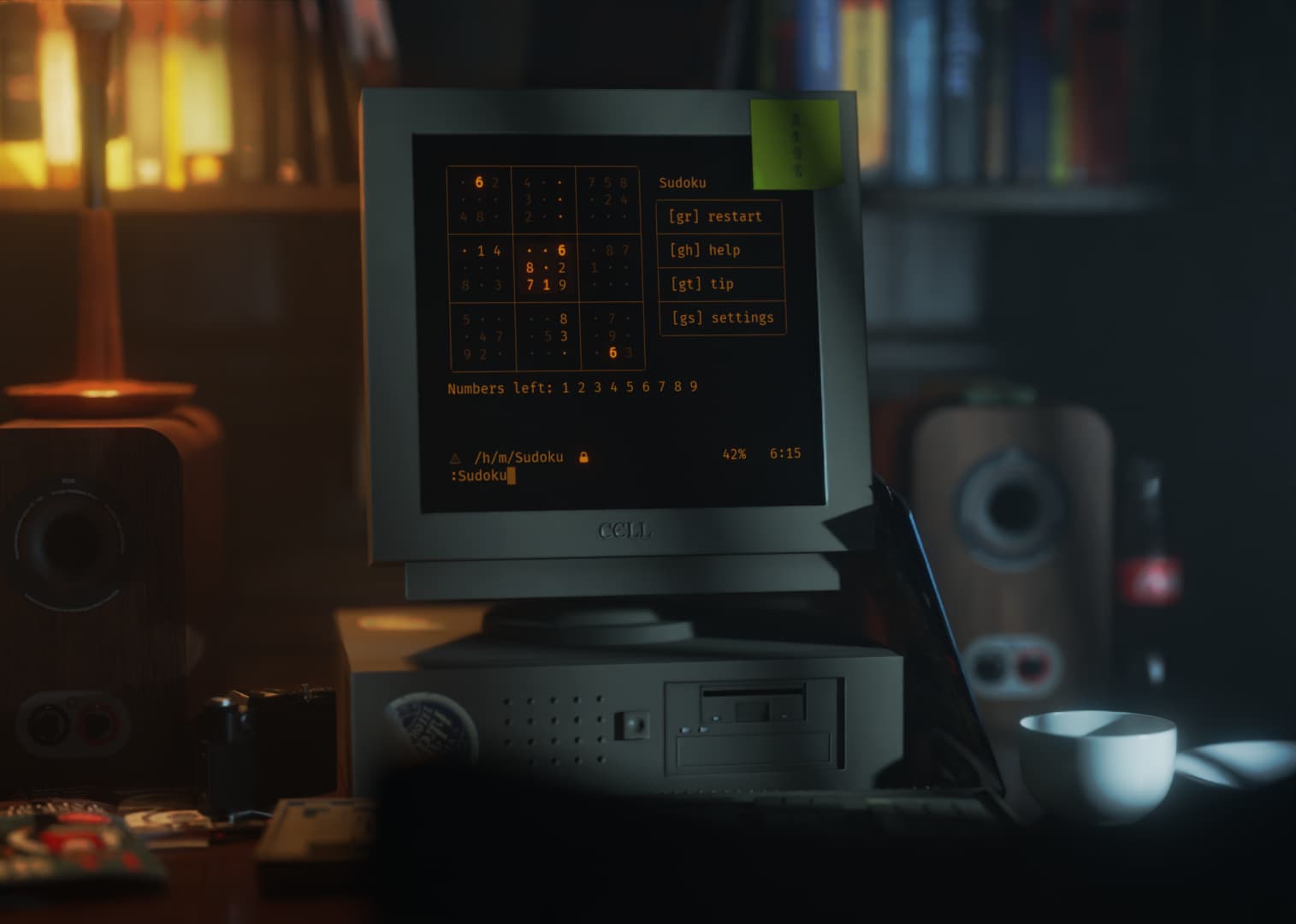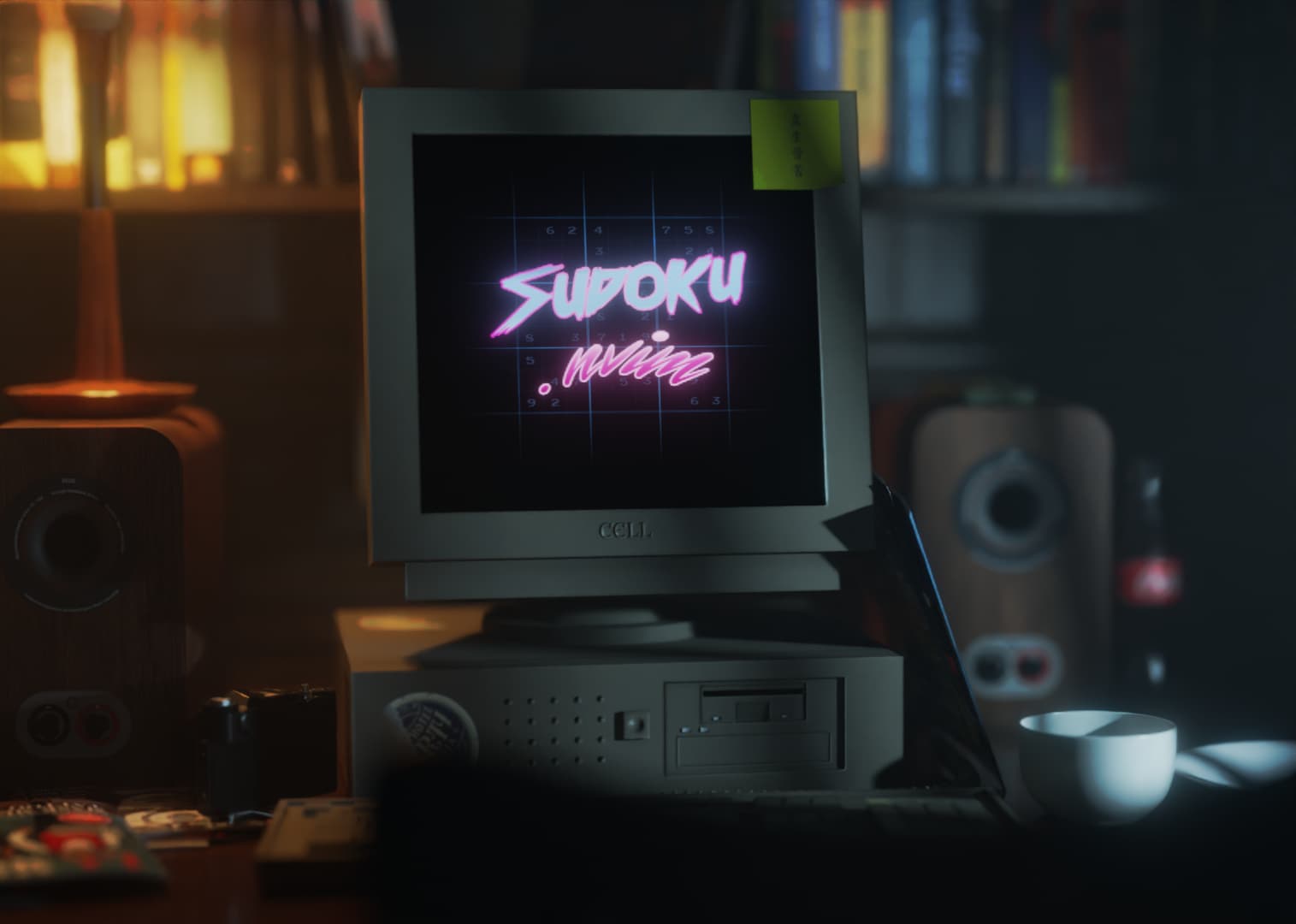Since using neovim have you become a coding ninja, a keyboard warrior a programming wizard?
Are you so blazingly fast that you now have time to spend outside of your terminal?
Now presenting: sudoku.nvim
Install with Packer
use {
'jim-fx/sudoku.nvim',
cmd = "Sudoku",
config = function()
require("sudoku").setup({
-- configuration ...
})
end
}Install with lazy.nvim
{
'jim-fx/sudoku.nvim',
cmd = "Sudoku",
config = function()
require("sudoku").setup({
-- configuration ...
})
end
} |
 |
-- These are the defaults for the settings
require("sudoku").setup({
persist_settings = true, -- safe the settings under vim.fn.stdpath("data"), usually ~/.local/share/nvim,
persist_games = true, -- persist a history of all played games
default_mappings = true, -- if set to false you need to set your own, like the following:
mappings = {
{ key = "x", action = "clear_cell" },
{ key = "r1", action = "insert=1" },
{ key = "r2", action = "insert=2" },
{ key = "r3", action = "insert=3" },
-- ...
{ key = "r9", action = "insert=9" },
{ key = "gn", action = "new_game" },
{ key = "gr", action = "reset_game" },
{ key = "gs", action = "view=settings" },
{ key = "gt", action = "view=tip" },
{ key = "gz", action = "view=zen" },
{ key = "gh", action = "view=help" },
{ key = "u", action = "undo" },
{ key = "<C-r>", action = "redo" },
{ key = "+", action = "increment" },
{ key = "-", action = "decrement" },
},
custom_highlights = {
board = { fg = "#7d7d7d" },
number = { fg = "white", bg = "black" },
active_menu = { fg = "white", bg = "black", gui = "bold" },
hint_cell = { fg = "white", bg = "yellow" },
square = { bg = "#292b35", fg = "white" },
column = { bg = "#14151a", fg = "#d5d5d5" },
row = { bg = "#14151a", fg = "#d5d5d5" },
settings_disabled = { fg = "#8e8e8e", gui = "italic" },
same_number = { fg = "white", gui = "bold" },
set_number = { fg = "white", gui = "italic" },
error = { fg = "white", bg = "#843434" },
}
})You can see all the default mappings in the configuration settings. If you want to define your own you can either do it with the config, for example if you would like to use c to clear a cell you would set:
require("sudoku").setup({
mappings = {
{ key = "c", action = "clear_cell" }
}
})You can also just use vim.keymap.set (this will create keymaps for all buffers, not just for the ones that contain the sudoku board)
vim.keymap.set("n", "c", ":Sudoku clear_cell")
-- or
vim.keymap.set("n", "c", function() require("sudoku").setCell(0) end)Tip
You could add the following mappings to make it easier to jump between squares
-- ftplugin/sudoku.lua
vim.keymap.set("n", "<C-l>", "8l")
vim.keymap.set("n", "<C-h>", "8h")
vim.keymap.set("n", "<C-k>", "4k")
vim.keymap.set("n", "<C-j>", "4j")All the actions you can see in the default mappings are also available as commands, eg:
:Sudoku insert=1
:Sudoku insert=2
...
:Sudoku insert=3
:Sudoku new_game
:Sudoku view=help
:Sudoku view=settings
:Sudoku view=tip
:Sudoku reset_game